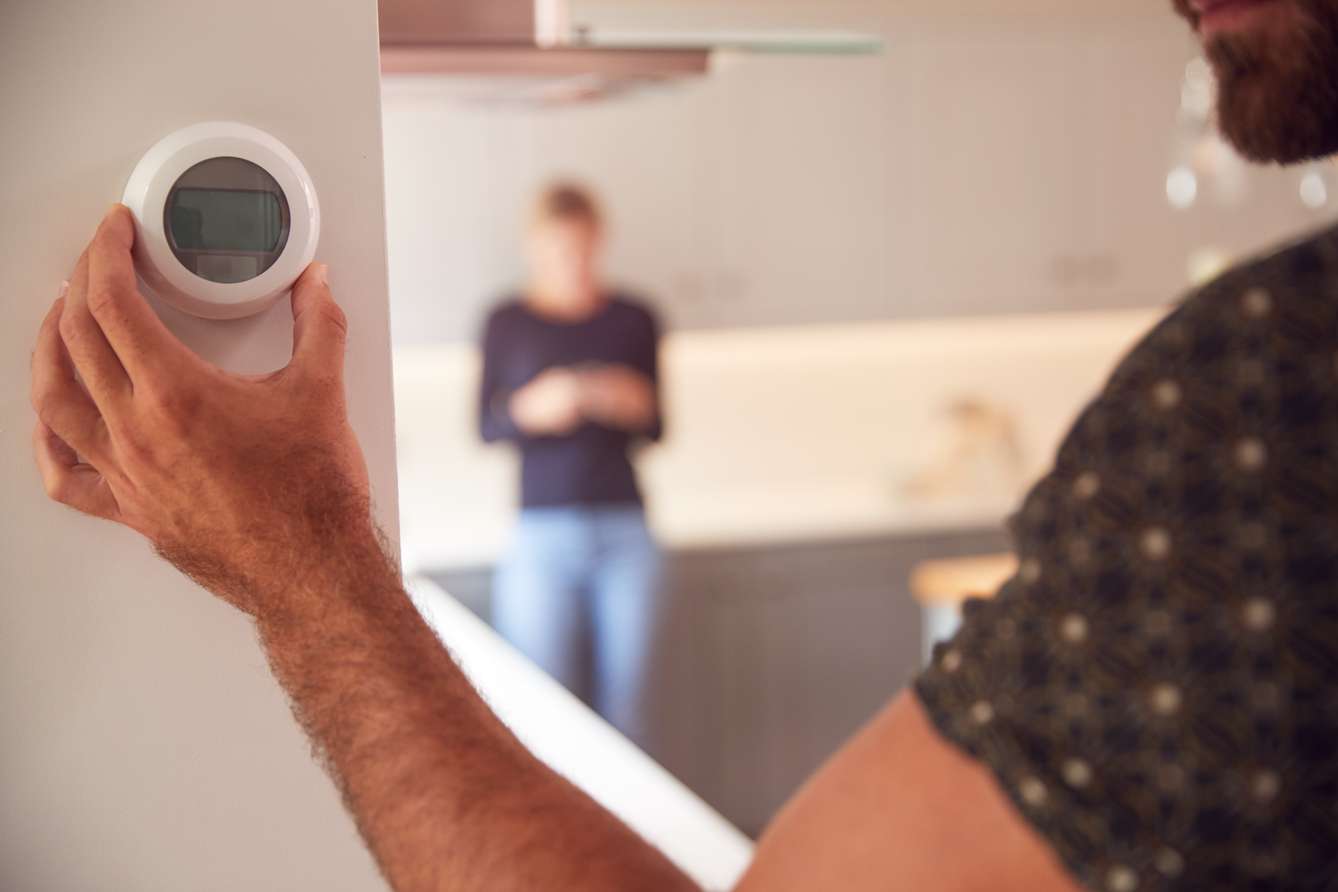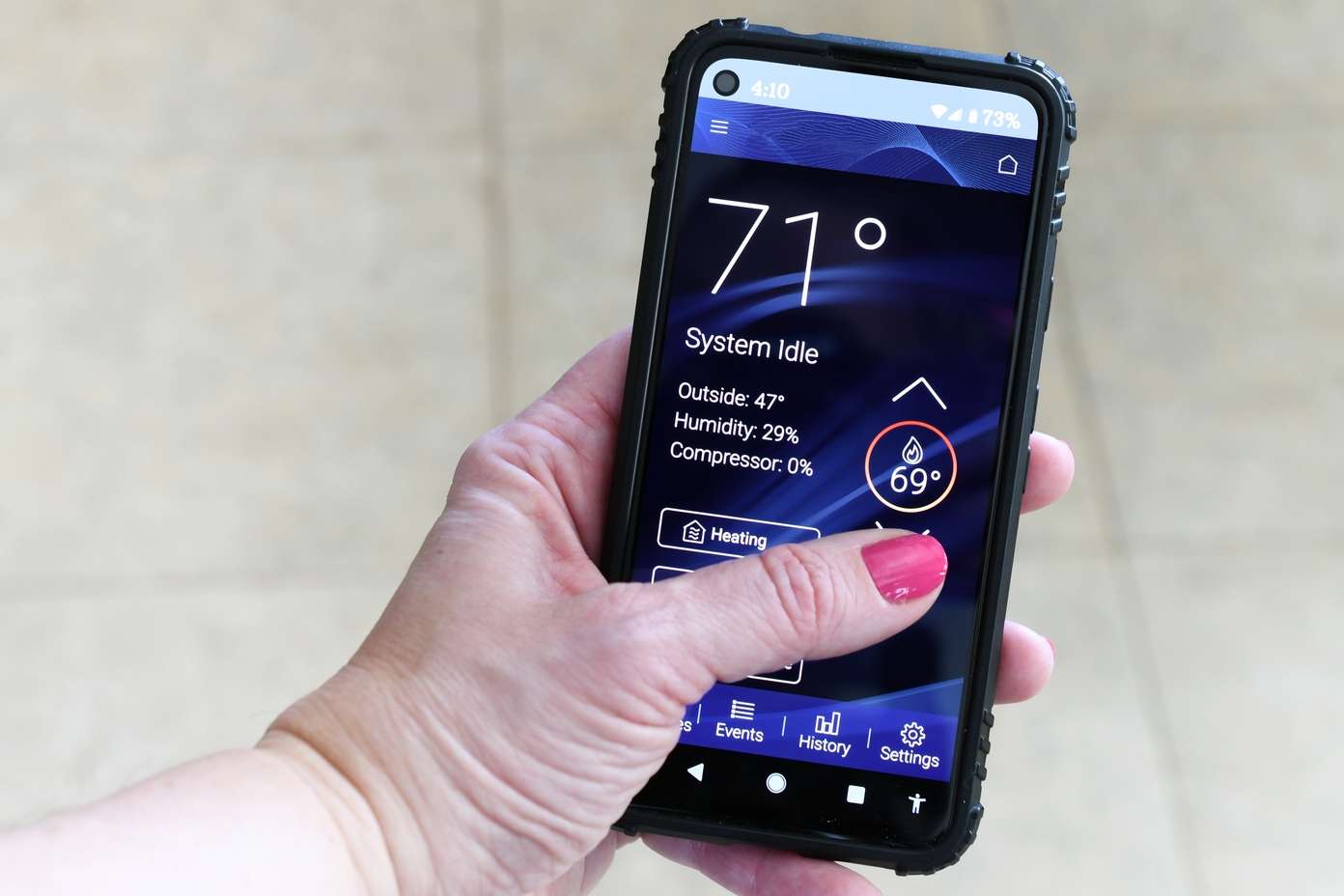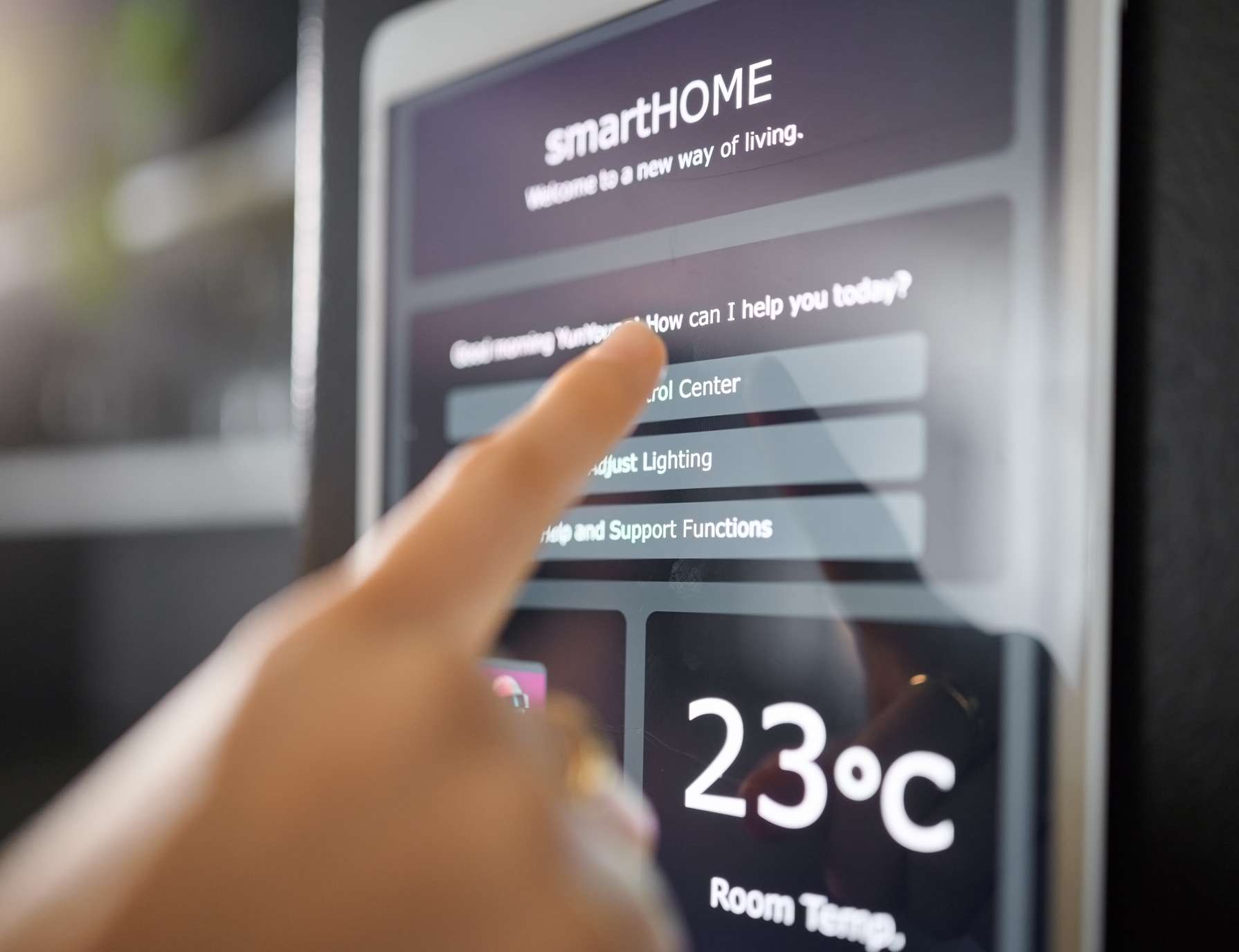As technology continues to advance, smart thermostats have become a popular choice for homeowners looking to enhance their comfort, energy efficiency, and control over their heating and cooling systems. A smart thermostat offers numerous benefits, such as the ability to remotely adjust temperature settings, create schedules, and even integrate with other smart home devices. However, with a wide range of options available in the market, it’s crucial to consider certain factors before making a purchase decision. So, how to choose the smart thermostat for your home? There are a few things to consider before making a purchase. Here are some key factors to keep in mind:
Compatibility

Before purchasing a smart thermostat, it’s essential to ensure compatibility with your existing heating, ventilation, and air conditioning (HVAC) system. Smart thermostats typically work with various types of HVAC systems, such as central heating and cooling, heat pumps, and radiant systems. Research the specifications of your HVAC system and check whether the smart thermostat you’re interested in is compatible. Some systems may require specific wiring or additional accessories to function optimally with certain smart thermostat models. Here are the reasons why checking compatibility is essential:
Proper Functionality
If you purchase a smart thermostat that is not compatible with your HVAC system, it might not function properly or at all. This could lead to issues such as incorrect temperature readings, inability to control the system remotely, or even damaging the thermostat or the HVAC equipment. Imagine investing in a cutting-edge smart thermostat with a sleek design and advanced features, only to discover that it cannot communicate effectively with your HVAC system. The consequences of such an oversight can be significant, ranging from incorrect temperature readings to the inability to control your HVAC equipment remotely.
Installation Challenges
Incompatible wiring and setup can make the installation process difficult or impossible. Some smart thermostats require specific wiring configurations or additional components to work with certain HVAC systems. If you’re not aware of these requirements beforehand, you might face installation problems. A well-intentioned DIY installation could turn into a frustrating ordeal, with the smart thermostat unable to sync with your HVAC system. In such cases, professional assistance might be necessary, adding unexpected expenses and time to the equation.
Energy Efficiency
The primary purpose of a smart thermostat is to enhance energy efficiency. A compatible smart thermostat will be able to communicate effectively with your HVAC system, optimizing heating and cooling cycles based on your preferences and usage patterns. Incompatibility might result in inefficient operation and reduced energy savings. This can lead to inefficient operation and potentially undermine the energy-saving benefits that smart thermostats are designed to provide.
Prevent Damage
In worst-case scenarios, attempting to install an incompatible smart thermostat could potentially damage your HVAC equipment or the thermostat itself. This can lead to costly repairs or replacements that could have been avoided with proper compatibility checks.
Warranty and Support
Manufacturers often provide warranties and customer support for their smart thermostats, but these warranties may be voided if the thermostat is installed on an incompatible system. Ensuring compatibility helps maintain warranty coverage and access to customer support.
Time and Effort Savings
Avoiding the hassle of purchasing an incompatible smart thermostat saves you time, effort, and frustration. Researching compatibility beforehand can prevent the need to return or exchange a product that doesn’t work as expected.
To determine compatibility, it’s recommended to consult the product’s specifications, user manual, or the manufacturer’s website. Some smart thermostat manufacturers also offer online compatibility checkers or tools that help you verify whether their product will work with your HVAC system. If you’re unsure, seeking advice from a professional HVAC technician can provide peace of mind and ensure a smooth installation process.
Price

The advent of smart thermostats has revolutionized the way we interact with and manage our heating and cooling systems. These intelligent devices offer a myriad of benefits, from energy savings and convenience to remote control capabilities and integration with smart home ecosystems. As enticing as these features are, it’s important to remember that the price of a smart thermostat plays a significant role in determining whether it’s a suitable investment for your specific needs and budget.
Understanding the cost of a smart thermostat goes beyond just looking at the initial price tag. While some models may appear more affordable upfront, a comprehensive analysis involves considering the long-term value and potential savings they can bring. Smart thermostats are designed to optimize energy consumption by learning your preferences, creating schedules, and adapting to your routine. This can result in substantial reductions in energy bills over time, potentially offsetting the initial cost and delivering ongoing financial benefits.
However, it’s crucial to strike a balance between the features offered by a smart thermostat and its associated price. A higher-priced model may come equipped with advanced functionalities such as adaptive learning algorithms, seamless integration with other smart devices, and detailed energy consumption reports. These features can enhance your overall experience and provide valuable insights into your energy usage patterns. On the other hand, a more affordable option might provide the basic features you need without overwhelming you with additional bells and whistles.
Installation costs can vary based on whether you choose to install the thermostat yourself or hire a professional. Some smart thermostats may require specialized wiring or compatibility accessories, which could add to the overall cost. Considering the complete package – including the thermostat itself, installation expenses, and any necessary add-ons – gives you a clearer picture of the total investment required. When assessing the price, it’s important to recognize that not all smart thermostats are created equal. Different manufacturers offer varying levels of quality, customer support, and warranty coverage. Investing in a reputable brand might come with a slightly higher price point, but it often ensures better product reliability, customer service, and longer-lasting performance. Cheaper alternatives might lack the durability, software updates, and support that established brands provide.
The decision to check the price before buying a smart thermostat is about making an informed investment that aligns with your budget and expectations. Assessing the overall value – considering both the immediate costs and the potential long-term savings – empowers you to choose a smart thermostat that meets your requirements without straining your finances. By understanding the unique features, installation considerations, and manufacturer reputation associated with various price points, you can confidently select a smart thermostat that strikes the right balance between cost and benefits, enhancing your home’s efficiency, comfort, and convenience in the process.
Installation

When it comes to upgrading your home with the latest smart technologies, a smart thermostat is undoubtedly an appealing addition. The ability to control your heating and cooling system remotely, optimize energy usage, and integrate with other smart devices can enhance your comfort and convenience. However, the process of installation is a critical aspect that should not be overlooked. The installation of a smart thermostat can significantly impact your experience, efficiency, and even the functionality of the device itself. Here’s why installation considerations are key factors to keep in mind when buying a smart thermostat.
Ease of Installation
The complexity of installing a smart thermostat varies depending on the model and your existing HVAC system. Some smart thermostats are designed for DIY installation, offering step-by-step instructions and user-friendly interfaces. Others might require more technical expertise or specific wiring configurations, necessitating professional installation. Considering your own comfort level with DIY projects and technical tasks can guide you toward a smart thermostat that aligns with your capabilities.
Compatibility
As previously mentioned, compatibility with your HVAC system is paramount. An incompatible thermostat could lead to installation challenges, frustration, and potential system damage. By understanding the wiring requirements, voltage specifications, and any additional accessories needed for installation, you can ensure a smooth setup process and prevent any setbacks.
Professional Assistance
If you’re unsure about your ability to install a smart thermostat correctly, enlisting the help of a professional HVAC technician is a wise choice. They possess the knowledge and experience to assess your system’s compatibility, ensure proper wiring connections, and troubleshoot any issues that may arise during installation. While this incurs additional costs, it can save you time, stress, and potential mistakes.
Warranty and Support
Some manufacturers provide warranties that are contingent on proper installation. If you choose to install the smart thermostat yourself and encounter issues later on, you might risk voiding the warranty. Opting for professional installation can provide peace of mind, knowing that the device is set up correctly and in accordance with the manufacturer’s guidelines.
Sensitivity to Mistakes
A smart thermostat‘s functionality is highly sensitive to installation errors. Even a small mistake in wiring or setup could lead to inaccurate temperature readings, improper functioning of your HVAC system, or even permanent damage to the thermostat. Investing the time to understand the installation process or seeking professional help can prevent these potential pitfalls.
Access to Features
Correct installation ensures that you can take full advantage of the features offered by your smart thermostat. Remote control, scheduling, adaptive learning, and energy monitoring are all dependent on proper installation. Improper setup might limit your ability to enjoy these benefits fully.
Connectivity

The connectivity aspect of a smart thermostat is a crucial factor that should not be underestimated. Connectivity is the cornerstone of the remote control capabilities that smart thermostats provide. Through Wi-Fi or other communication protocols, you can adjust temperature settings, create schedules, and monitor your HVAC system’s performance from anywhere using your smartphone or other devices. This feature is particularly valuable when you’re away from home and want to ensure comfort upon your return or make real-time adjustments.
Many households are adopting smart home devices to streamline various aspects of daily life. When choosing a smart thermostat, compatibility with your existing smart home ecosystem is crucial. A thermostat that can seamlessly integrate with platforms like Amazon Alexa, Google Assistant, or Apple HomeKit allows you to control your HVAC system using voice commands and create interconnected scenarios that enhance your home’s efficiency and convenience.
Connectivity also extends to the user interface of the smart thermostat’s accompanying mobile app. A well-designed app provides an intuitive dashboard that allows you to easily access temperature controls, schedules, and energy consumption data. When evaluating smart thermostats, consider the quality of the app’s interface, its responsiveness, and its availability on both iOS and Android platforms. Smart thermostat manufacturers often release firmware updates to improve device performance, add new features, or address security vulnerabilities. A connected smart thermostat can receive these updates automatically, ensuring that you always have access to the latest advancements without needing to replace the physical device. This keeps your thermostat up-to-date and functioning optimally over time.
Connectivity allows your smart thermostat to gather and transmit real-time data about your energy usage. This data can be presented to you in the form of detailed reports and insights, helping you understand your consumption patterns and identify opportunities for energy conservation. By staying informed, you can make informed decisions about your heating and cooling habits. As with any connected device, security is a critical concern. Ensure that the smart thermostat you choose employs strong encryption protocols to safeguard your data and prevent unauthorized access. Manufacturers that prioritize security updates and take measures to protect user information should be preferred.
Features

The emergence of smart thermostats has brought a new level of convenience, energy efficiency, and control to the management of our heating and cooling systems. These innovative devices offer a range of features that can enhance our daily lives and contribute to a more comfortable and sustainable living environment. When considering the purchase of a smart thermostat, evaluating its features becomes a pivotal factor that influences its suitability for your needs. Here’s why features are key factors to keep in mind when buying a smart thermostat:
Customizable Temperature Control
One of the primary attractions of smart thermostats is the ability to customize temperature settings to your preferences. Look for features that allow you to easily adjust the temperature through intuitive interfaces, both on the device itself and through accompanying smartphone apps. The convenience of being able to fine-tune the climate in your home to match your comfort level is a fundamental aspect to consider.
Programmable Scheduling
A standout feature of smart thermostats is their capacity to create and manage temperature schedules. This means you can program the thermostat to automatically adjust temperatures at specific times of the day or week. Whether it’s ensuring a warm home in the morning or optimizing energy usage during the day, scheduling features can help you achieve a balance between comfort and efficiency.
Adaptive Learning Algorithms
Some advanced smart thermostats incorporate adaptive learning algorithms that analyze your temperature preferences and patterns over time. These algorithms can automatically adjust settings based on your behavior, optimizing comfort while minimizing energy consumption. The more a thermostat learns and adapts to your routine, the more energy savings you can potentially achieve.
Remote Control and Accessibility
The ability to control your thermostat remotely is a transformative feature. With a connected smart thermostat, you can use your smartphone or other devices to adjust settings, whether you’re at home or away. This feature is especially valuable for ensuring comfort upon your return and for managing your home’s climate while you’re on vacation.
Energy Monitoring and Reporting
Many smart thermostats provide insights into your energy consumption patterns. Look for models that offer detailed energy usage reports, real-time feedback, and suggestions for optimizing settings to save energy. These features empower you to make informed decisions about your usage habits and identify potential areas for improvement.
Integration with Smart Home Ecosystem
If you’re building a smart home ecosystem, compatibility is essential. A smart thermostat that integrates seamlessly with platforms like Amazon Alexa, Google Assistant, or Apple HomeKit can be voice-controlled and incorporated into automation scenarios with other smart devices, enhancing overall efficiency and convenience.
Geofencing and Presence Detection
Some smart thermostats utilize geofencing technology to detect when you’re approaching home or leaving. This allows them to adjust the temperature accordingly, ensuring a comfortable environment upon arrival without wasteful heating or cooling in your absence.
Software Updates and Future-Proofing
Consider the manufacturer’s track record for providing software updates and improvements. Smart thermostats that receive regular updates can potentially gain new features and enhancements over time, prolonging the usefulness of your investment.
The features offered by a smart thermostat play a pivotal role in determining its value and compatibility with your lifestyle. Carefully evaluating the features that align with your preferences, habits, and home automation goals ensures that you choose a smart thermostat that enhances your comfort, saves energy, and provides a seamless integration with your daily routine.

The decision to invest in a smart thermostat can significantly enhance your living experience. By keeping these five key factors in mind – compatibility, price, installation, connectivity, and features – you’re equipped with the knowledge to make an informed choice. As you embark on the journey to upgrade your home’s comfort, efficiency, and control, remember that each factor contributes to a holistic understanding of what makes a smart thermostat the right fit for your unique needs. Whether you’re a tech enthusiast seeking the latest advancements or a homeowner looking for practical ways to conserve energy, these considerations will guide you toward a smart thermostat that aligns with your goals, enabling you to embrace the future of home comfort with confidence.
